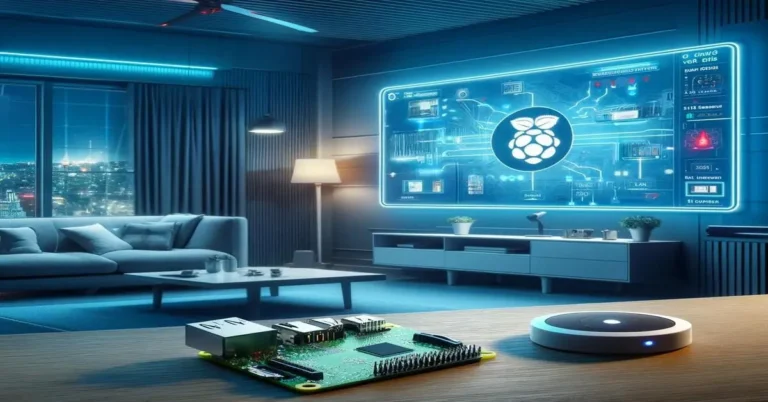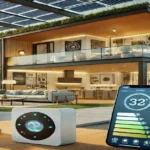Introduction
Imagine walking into your home, and with just a voice command, the lights turn on, the thermostat adjusts to your preferred temperature, and your coffee machine starts brewing. Sounds like something out of a sci-fi movie, right? Well, with Raspberry Pi home automation, this futuristic dream can become a reality.
Raspberry Pi is a small yet powerful computer that can serve as the brain of your smart home. Whether you’re a beginner or an experienced tech enthusiast, this guide will walk you through the essentials of home automation with Raspberry Pi, including step-by-step tutorials, useful tools, and practical applications.
Why Choose Raspberry Pi for Home Automation?
Raspberry Pi is widely used for smart home projects due to its affordability, versatility, and ability to integrate with different home automation software. Here are some key benefits:
- Cost-Effective: A Raspberry Pi setup is much cheaper than commercial home automation systems.
- Customizable: You have full control over your smart home setup.
- Expandable: Easily integrates with devices like Alexa, Google Home, and sensors.
- Open-Source: Supported by a vast community, meaning endless learning resources.
With that in mind, let’s explore some exciting Raspberry Pi projects for home automation.
Getting Started with Raspberry Pi Home Automation
Before diving into automation, you need to set up your Raspberry Pi. Here’s a simple guide:
Step 1: Gather Your Hardware
You will need:
- A Raspberry Pi (preferably Raspberry Pi 4)
- A microSD card (16GB or more)
- A power supply
- An internet connection (Wi-Fi or Ethernet)
- Sensors (motion, temperature, humidity, etc.)
- Smart devices (lights, cameras, switches, etc.)
- A touch screen for Raspberry Pi home automation (optional but useful)
Step 2: Install Home Automation Software
Choosing the right software for Raspberry Pi is essential. Here are the top options:
- Home Assistant – One of the most powerful home automation platforms.
- OpenHAB – A flexible and open-source automation software.
- Domoticz – A lightweight option with great customization.
- HOOBS – Best for integrating Raspberry Pi with Apple HomeKit.
To install Home Assistant:
- Download Home Assistant OS from the official website.
- Flash it onto your microSD card using software like Balena Etcher.
- Insert the card into the Raspberry Pi and power it up.
- Follow the on-screen instructions to complete the setup.
Top Raspberry Pi Home Automation Projects
Now that you have your Raspberry Pi set up, here are some incredible home automation projects you can build:
1. Smart Lighting System
- Control LED strips and smart bulbs with voice commands or a mobile app.
- Use motion sensors to turn lights on/off automatically.
- Integrate with Alexa home automation using Raspberry Pi.
2. Automated Security System
- Install cameras and sensors for real-time surveillance.
- Set up face recognition for advanced security.
- Get mobile notifications for unexpected movements.
3. Smart Thermostat Control
- Automate temperature settings based on weather and preferences.
- Save energy by turning off heating/cooling when not needed.
- Integrate with Google Assistant or Alexa.
4. Home Energy Monitoring System
- Track electricity usage and optimize consumption.
- Receive alerts for abnormal power consumption.
- Reduce energy bills with automated smart switches.
5. Voice-Controlled Home Automation
- Connect Raspberry Pi with Alexa or Google Home.
- Control devices using simple voice commands.
- Link it with an LCD touch screen for better controls.
How to Set Up Alexa Home Automation with Raspberry Pi
Want to control your smart home using voice commands? Here’s how you can integrate Alexa home automation with Raspberry Pi:
- Install Amazon Alexa SDK on Raspberry Pi.
- Set up a developer account.
- Follow the official Alexa AVS setup guide.
- Configure smart devices to respond to voice commands.
Once set up, you can say, “Alexa, turn on the lights”, and watch your home light up!
Best Software for Raspberry Pi Home Automation
Choosing the best software for Raspberry Pi depends on your needs. Here’s a quick comparison:
| Software | Best For | Features |
|---|---|---|
| Home Assistant | Full automation | Works with Alexa, Google Home, and more |
| OpenHAB | Customization | Highly flexible and supports many devices |
| Domoticz | Lightweight use | Minimal hardware requirements |
| HOOBS | Apple HomeKit | Easy integration with iOS devices |
Conclusion: Why You Should Try Raspberry Pi Home Automation
Home automation with Raspberry Pi is not just fun but also incredibly useful. Whether you want a voice-controlled smart home, a security system, or a fully automated lighting setup, Raspberry Pi makes it all possible.
By following this guide, you can create a personalized smart home that fits your lifestyle. So, grab a Raspberry Pi, install some smart home software, and start building your own automation system today!
FAQs
1. Is Raspberry Pi good for home automation?
Yes! Raspberry Pi is affordable, customizable, and supports various home automation software like Home Assistant, OpenHAB, and Domoticz.
2. Can Raspberry Pi control Alexa?
Yes, you can integrate Alexa home automation with Raspberry Pi using the Amazon Alexa SDK.
3. What smart home devices work with Raspberry Pi?
Most smart bulbs, thermostats, security cameras, and even Raspberry Pi home automation touch screens can be controlled with Raspberry Pi.
4. What is the best software for Raspberry Pi home automation?
Home Assistant is the most popular choice, but OpenHAB, Domoticz, and HOOBS are also excellent options.
5. Can I use Raspberry Pi for voice control?
Yes! By connecting Raspberry Pi to Alexa or Google Assistant, you can control smart devices using voice commands.



